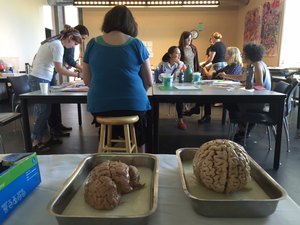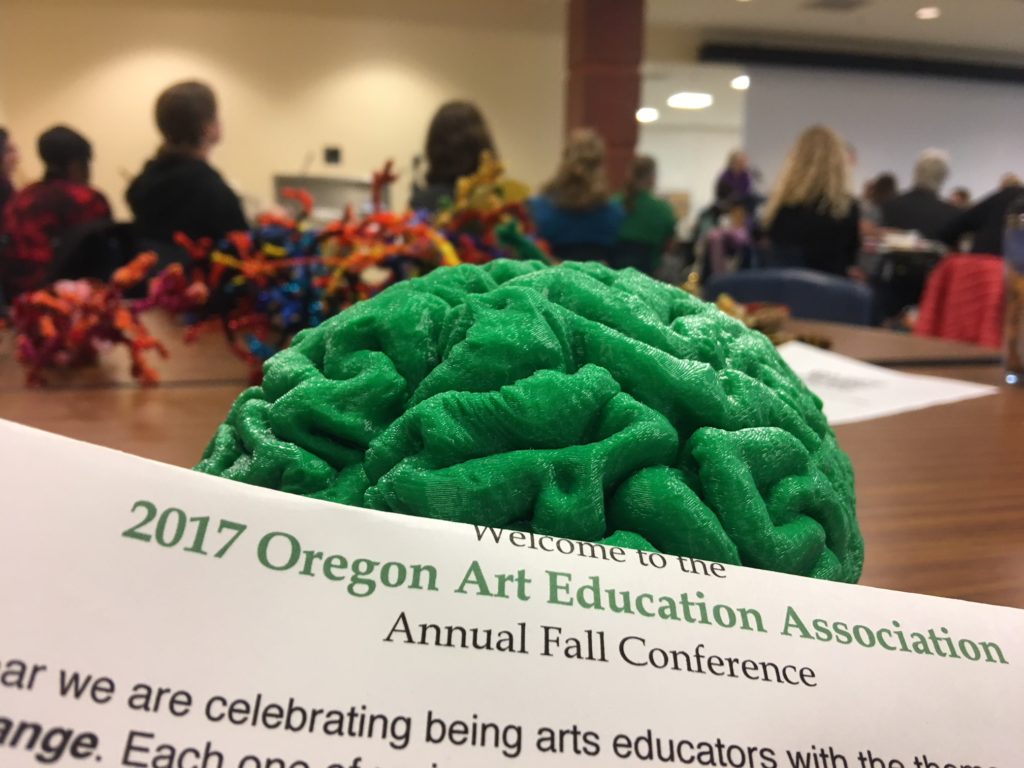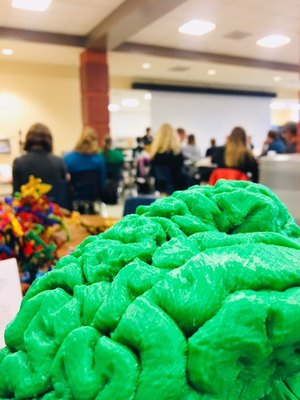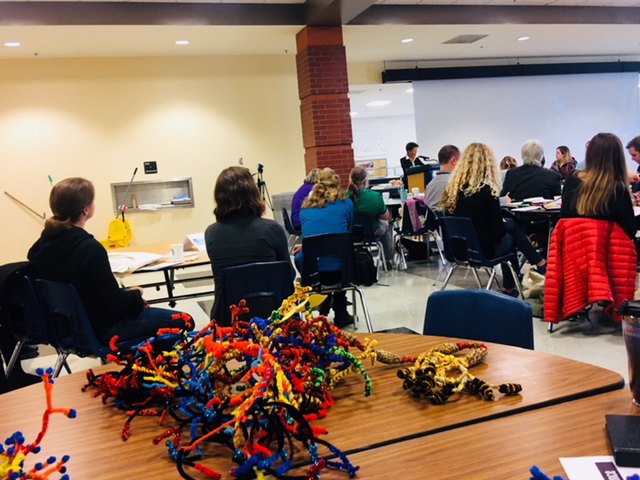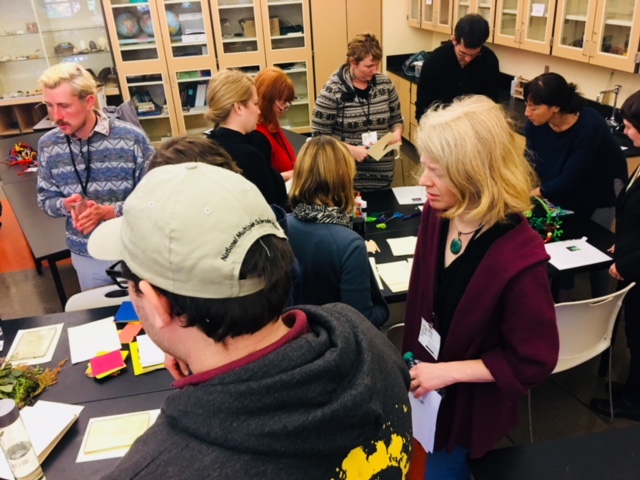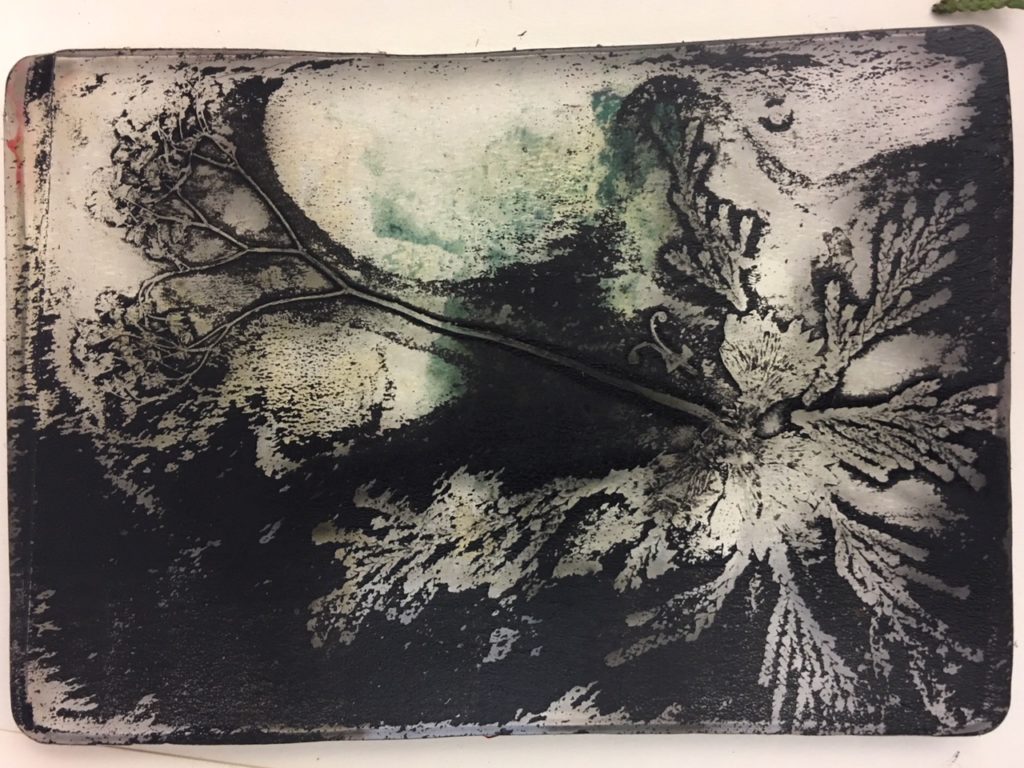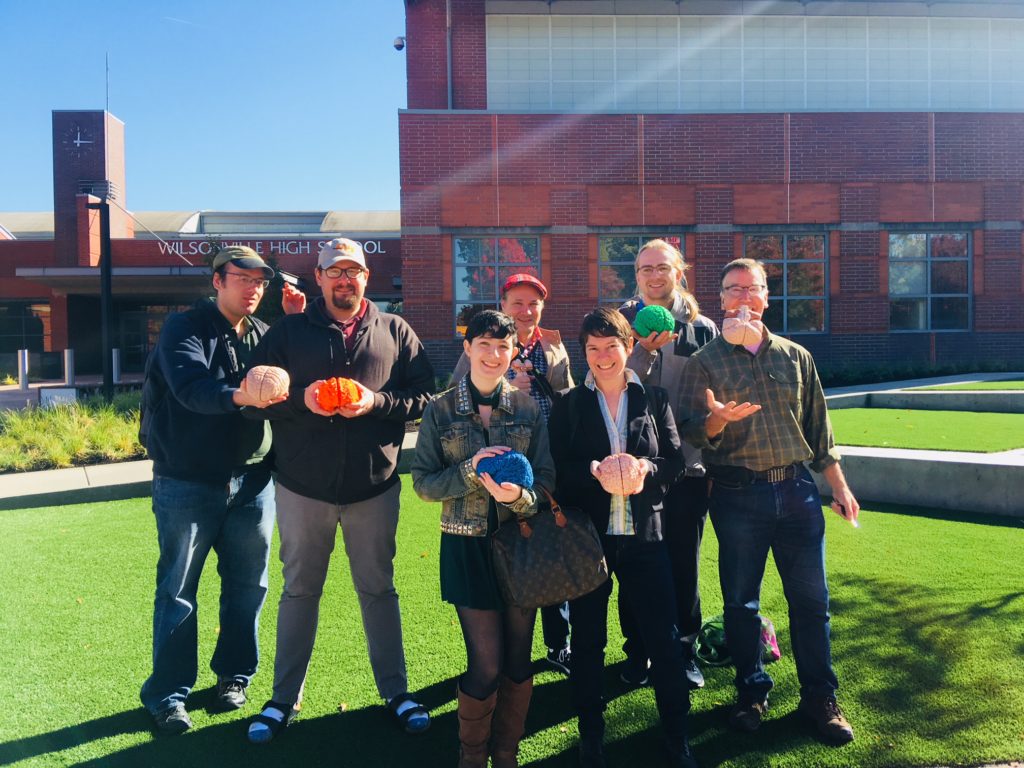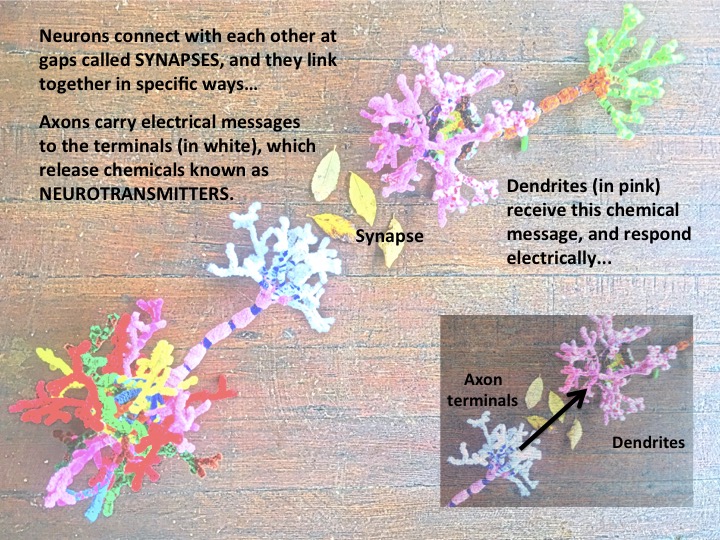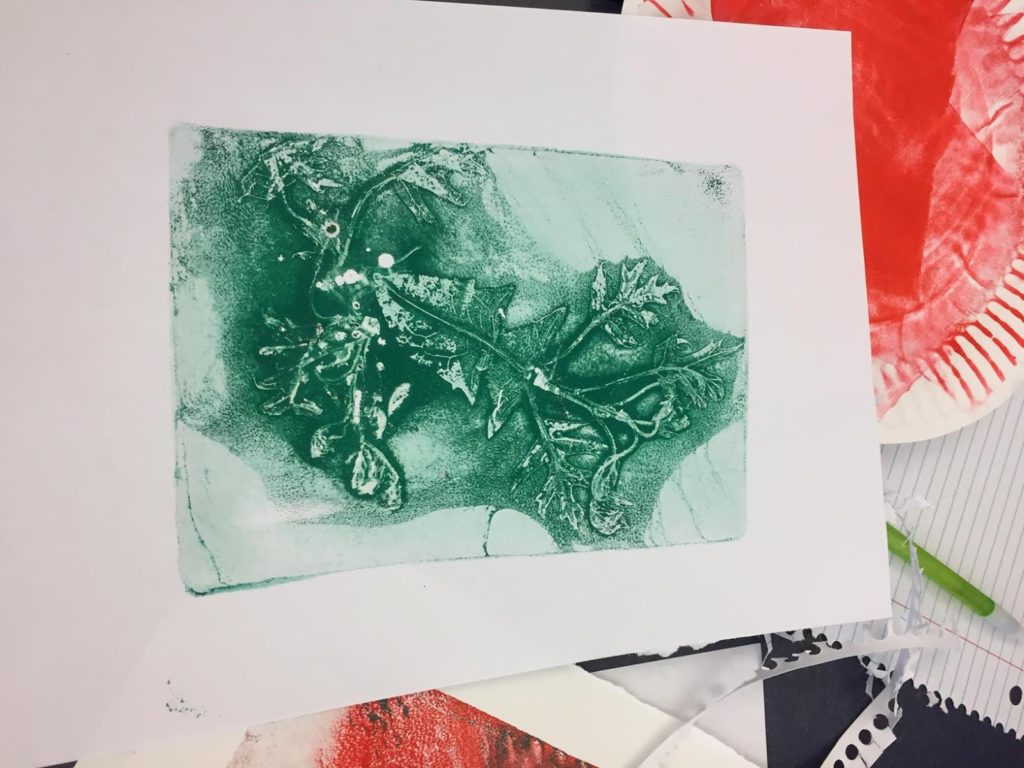NW Noggin was delighted to participate in the annual Oregon Art Education Association (OAEA) conference in Wilsonville, just down I-5 from Portland! It was a brilliantly colorful autumn day to run a workshop titled “STEAM Ahead! Using Art and Science to Engage Underserved Communities…”
LEARN MORE: 2017 OAEA Conference Brochure
We’d joined OAEA previously as well, presenting at their Ashland, Oregon conference in 2015…
LEARN MORE: Art and Brains in Ashland
This year we were particularly excited to hear from Representative Suzanne Bonamici, the Democratic co-Chair of the Science, Technology, Engineering, Arts and Mathematics (STEAM) caucus in the U.S. House! Noggin is invited by both the STEAM and Neuroscience caucuses to present on our outreach work in Congress this fall, during the Society for Neuroscience conference in Washington, DC!
Our volunteers included Travis Christian, Ali Mack, Thomas Madison and Jobe Ritchie from Psychology at Portland State University, along with Heather Wild, an adjunct cognitive neuroscience instructor at both PSU and Mount Hood Community College. Jeff Leake was our official presenter, and Kanani Miyamoto, the Noggin Resource Council member for Arts Integration, had planned a neuron printing project…
LEARN MORE: #brains2DC!
Representative Bonamici began with a quote from John F. Kennedy about the role of artists, and the arts. “If sometimes our great artists have been the most critical of our society,” wrote Kennedy, “it is because their sensitivity and their concern for justice, which must motivate any true artist, makes him (or her) aware that our Nation falls short of its highest potential.”
“If art is to nourish the roots of our culture, society must set the artist free to follow (their) vision wherever it takes (them). We must never forget that art is…a form of truth.”
Bonamici spoke passionately about her own immersion in the arts as a child in Detroit, her mom a piano teacher and painter, who brought her often to the city’s many museums. She learned about manufacturing partly from Detroit Industry murals by Diego Rivera, and she thanked the audience of arts educators for their advocacy and teaching in often underfunded public schools.
LEARN MORE: Detroit Industry: The Murals of Diego Rivera
The arts inspire, inform and educate, she explained, and they prepare our young people to create, innovate and thrive. Bonamici noted that as a Congresswoman, she’d never heard any employer ask for job applicants who could handle standardized tests! Those tests, omnipresent after the 2001 No Child Left Behind law, led many districts to cut funding for the arts, as schools were evaluated based solely on “core” subjects including reading and math. The results were devastating.
LEARN MORE: Research Links the Arts with Student Academic Gains
The current President has threatened to eliminate both the National Endowment for the Humanities and the National Endowment for the Arts, and the bipartisan STEAM caucus has responded forcefully. Representative Bonamici and her Republican co-Chair Elise Stefanik of New York noted in a joint statement that “integrating arts across disciplines…prepares people to be innovative and creative, both critical to growing our 21st Century economies and creating good jobs. The arts also help us to be empathetic, which makes our communities better places to live.”
LEARN MORE: Statement from STEAM Caucus Co-Chairs Defending National Endowment for the Arts, Important Cultural Agencies
Representative Suzanne Bonamici also mentioned NW Noggin as a specific example of a STEAM outreach organization making real impacts in our Northwest communities!
Bonamici then introduced a special guest – Jane Chu, the Chairman of the National Endowment for the Arts! Chairman Chu praised the Every Student Succeeds Act (ESSA) championed by Rep. Bonamici and signed into law by President Obama in 2015. ESSA replaced No Child Left Behind, granting greater flexibility to local communities in terms of assessment, and “giving students avenues of expression through the arts, at a time when much of society appears to be communicating less.”
“NASA did not,” asserted Chu, “put astronauts on the Moon purely with STEM.” Engineers, she reminded us, were asked to dream and imagine. She cited research indicating that children involved in arts programs do better than those without arts exposure, and achieve higher test scores in science and writing, an effect particularly pronounced in those from low socioeconomic homes. Arts exposed students are also more likely to go to college, and volunteer, vote, engage and take risks…
LEARN MORE: The Arts and Achievement in At-Risk Youth
Chairman Chu would like us “to empower every child in this country with an arts education,” something way beyond a limited, memorized “linear education,” to raise adults who can speak and connect with more people, and in more places.
We were excited by these speeches. We love introducing emerging neuroscience researchers to art students and artists, allowing them to work together, discuss ideas and collaborate – and then connecting them with diverse K-12 communities in the Pacific Northwest…
We’ve certainly encountered the occasional scientist who doesn’t grasp the value of the arts, and who prefers to talk primarily with others like themselves. We’ve heard some scientists heavily promote rote memorization of “elevator pitches,” which lack the flexibility, creativity and innovation inspired by actual engagement across disciplines, institutions and generations. These particular “science communicators,” we’ve learned, are often terrified of middle school students and can’t really talk science (yet!) to anyone outside a university conference or lab. Happily our young Noggin volunteers prefer true engagement: pressing “play” on your recorded pitch, they’ve discovered, is not genuine, or enough.
And both Rep. Bonamici and Chairman Chu noted that many Nobel Prize winning scientists, including Eric Kandel and Ramon y Cajal, credited their art training and experience for their ability to creatively visualize and imagine innovative approaches, and develop their hypotheses and experiments for exploring complex biological systems like the human brain.
LEARN MORE: Latino Network Learning and Lobes
LEARN MORE: Eric Kandel’s Reductionism in Art and Brain Science – Bridging the Two Cultures
LEARN MORE: Cajal and the discovery of a new artistic world: the neuronal forest
We then moved to our full classroom to describe our own experiences using art to teach traditionally underserved communities about how federal research is illuminating aspects of how our brains work…
We enjoyed very lively discussions about some of the challenges we’ve encountered and strategies we’ve developed for using arts integration to engage with diverse groups in K-12 classrooms, and public venues like bike shop pubs…
Working primarily with academically at risk students, urban and rural populations, and homeless youth, we have taken our unique collaboration of art and science from Portland Public Schools to rural Washington and Oregon, and for the second time this fall – all the way to Washington DC!
Our extraordinary Noggin outreach volunteers also described their own experiences with direct community service, cross-disciplinary collaboration, public speaking in schools and other venues, pipe cleaner brain cell construction – and the joy, educational value and excitement of leaving the classroom, and the elevator pitch – far behind!
We then broke into smaller groups to ask more questions, examine real human brains, and make art!
Many thanks to OAEA for the opportunity to hear such inspiring speakers, and explore the educational and brain benefits of integrating art and science for all…
From Kanani Miyamoto on her collagraph neuron print project…
Collagraph Neuron Prints
Student Understanding
Students will learn and understand different structures of the neuron and how they function. Some elements of art and process of printmaking will also be covered.
Arts Based Strategies
Principals of design, observational thinking.
Quick Overview
Step 1 : Explanation and discussion of neurons, functions and structors. Brief introduction/demo on collagraph printmaking with card stock/file folders. Students experiment with printmaking process.
Step 2: Start building neuron collagraph plates.
Step 3: Print.
Making Pipe Cleaner Neurons
Neuron Gelatin Prints




